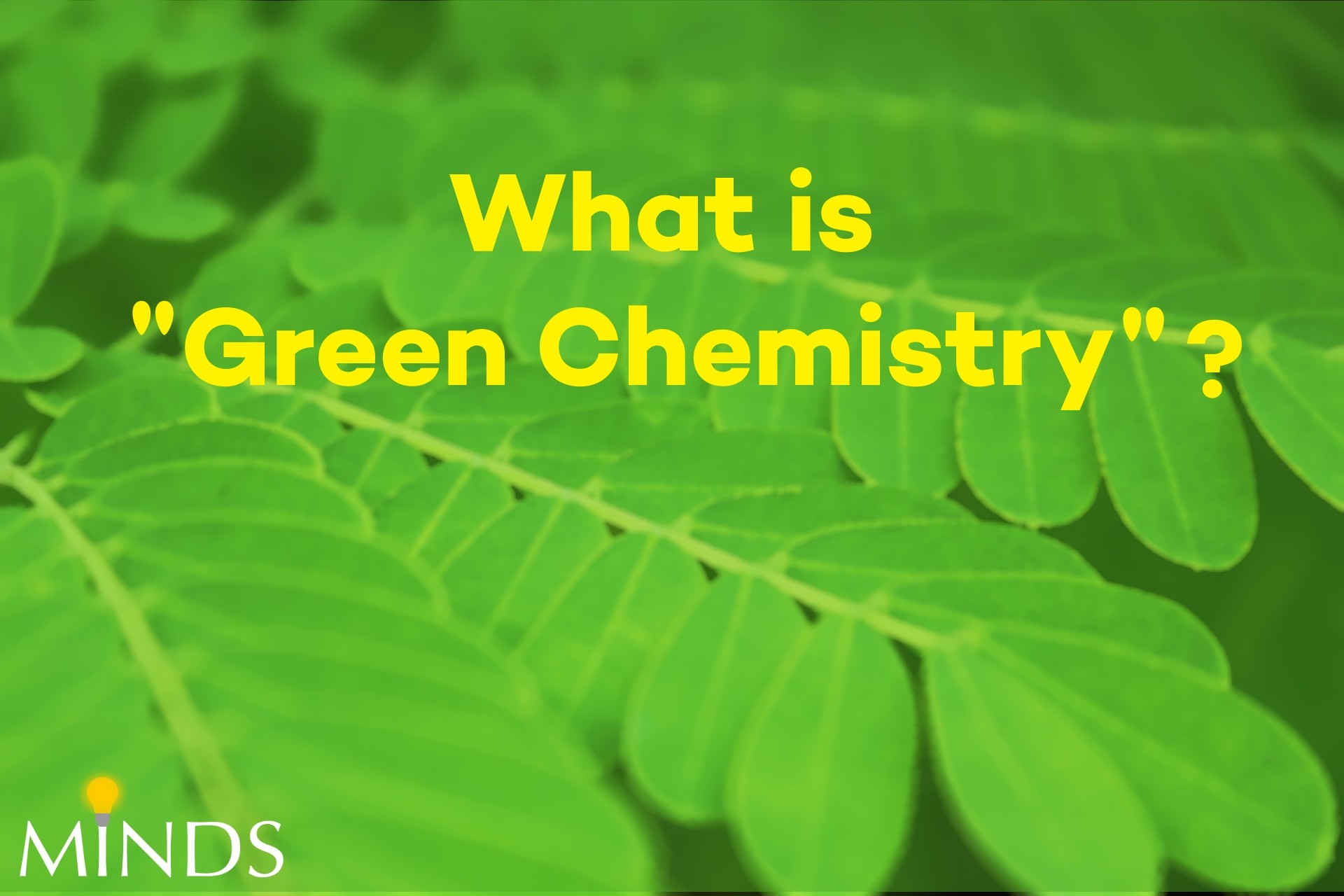Protecting our environment…with chemistry

Green chemistry, as defined by the EPA, is: “the design of chemical products and processes that reduce or eliminate the generation of hazardous substances.” This type of research is at the forefront of developing sustainable technologies. Some of the goals of green chemistry include:
- Using new solvents to replace volatile and hazardous substances, such as chlorinated and volatile organic substances.
- Reducing the energy consumption in commercial and industrial processes; as well as reducing the amount of hazardous waste produced in industries.
- Using renewable feedstocks, which is biological matter that can be used directly as a fuel. Or it can be converted into another fuel. Also called biomass feedstocks.
- And using less hazardous chemicals in industrial processes.
At the beginning of this century, the journal Green Chemistry, published by the Royal Society of Chemistry provides a forum for developments in green chemistry. In the US, the American Chemistry Society Green Chemistry Institute (ACS Green Chemistry Institute) was established in order to promote the ideas and benefits green chemistry and “green engineering” to industries and the global chemical enterprise.
The challenges of building a sustainable future
The development of “green chemistry” techniques has been largely modeled after studies conducted in the late 20th century. Namely, Anastas and Warner (1998) developed principles of green chemistry, which can be summarized in 12 points:
- Wherever it is practical to do so, synthetic methods should be used to ensure that the products of the method possess little or no toxicity to humans or the environment.
- The synthetic methods should be designed in a way that maximizes the total amount of reactants used in the process to produce a final product. Ensuring very little goes to waste.
- The products should preferably have reduced toxicity while keeping the efficacy of function of the replaced substance.
- It is preferable to prevent waste before it is formed, as opposed to treating or cleaning it after it is formed.
- “Auxillary substances” such as solvents and separating agents should be used only when necessary or preferably are innocuous (harmless) when used.
- Feedstock used for energy production should preferably be renewable whenever economically viable rather than depleting feedstocks.
- Whenever feasible, synthetic methods should be done at ambient temperatures and pressures. The environmental and economic impacts (in the long and short term) of energy requirements should be recognized.
- Unnecessary protection, deprotection steps or any derivatization in the synthetic method should be minimized or completely avoided in organic synthesis.
- Catalysts, as opposed to stoichiometric reagents, are far superior for chemical synthesis. And, wherever possible, the catalysts should be as selective as possible.
- Chemical products should not persist in the environment after their function has come to an end. Instead, they should degrade into innocuous products or be reused in some other process.
- Substances used in chemical synthesis should be chosen as such that they reduce chemical accidents such as explosions, and fires.
- Further developing analytical methods that allow real-time monitoring and control during a process as to predict and minimize the formation of potentially hazardous substances.
With those 12 principles in mind and developments in other fields, it’s possible to build a better future. In fact, the Presidential Green Chemistry Challenge Awards was established in 1995 to challenge chemists and encourage the development of green technologies at the academic and commercial levels. You can find a list of all years’ winners since then, here.
If you have access to academic papers, databases, and libraries I recommend checking out the following:
- I mentioned this in the list above:P.T. Anastas and J.C. Warner (1998) Green Chemistry Theory and Practice, Oxford University Press, Oxford.
- J.H. Clark and S.J. Tavener (2007) Org. Process Res. Develop., vol. 11, p.149 – ‘Alternative Solvents: shades of green.’
- R.A. Sheldon (2005) Green Chem., vol. 7, p. 267 – A review: ‘Green Solvents for sustainable organic solvents: state of the art.’
- Andraos, J., Mercer, S.M., (2012) J. Chem. Educ., 2012, 89 (2), pp 215–220, ‘Choosing the Greenest Synthesis: A Multivariate Metric Green Chemistry Exercise,’ doi: 10.1021/ed200249v
- Acar Bozkurt, P., (2017) Ultrasonics sonochemistry, vol. 35 (A), pp. 397-404, ‘Sonochemical green synthesis of Ag/graphene nanocomposite,’ doi: 10.1016/j.ultsonch.2016.10.018
Otherwise, you can check out:
- https://www.acs.org/content/acs/en/greenchemistry/what-is-green-chemistry/principles/12-principles-of-green-chemistry.html
- https://www.acs.org/content/acs/en/greenchemistry/what-is-green-chemistry/examples.html
- http://pubs.rsc.org/en/journals/journalissues/gc
- http://www.organic-chemistry.org/topics/green-chemistry.shtm
*Article originally found at Minds: https://www.minds.com/blog/view/671557661539442699












